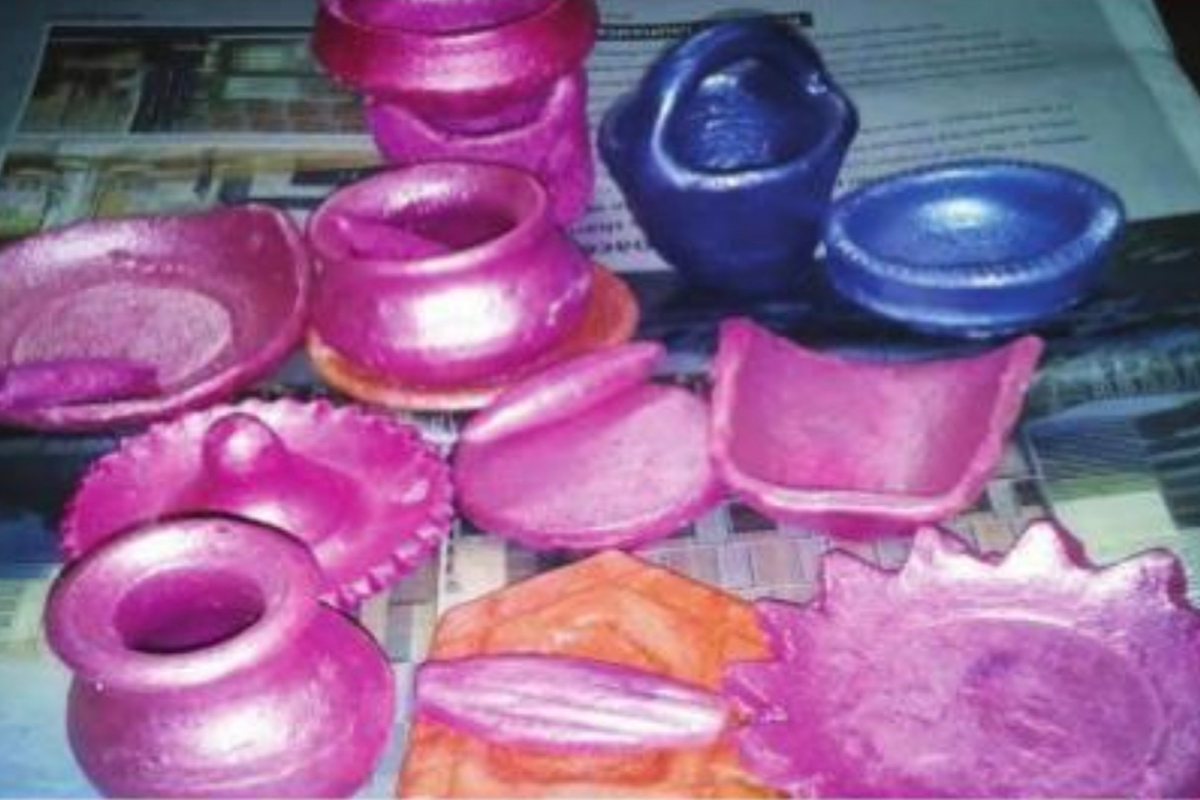North Bengal rings in 2025 with joy, devotion, and unity
Northern North Bengal welcomed the first day of the New Year 2025 with a unique blend of traditions, celebrations, and spirituality.
I stood at the counter patiently to pay my bills for my Diwali purchases— a dozen colourful waxfilled terracotta diyas, a beautifully crafted handmade toran for the entrance door and a decorative earthen urli to float candles.

(Photo:SNS)
I stood at the counter patiently to pay my bills for my Diwali purchases— a dozen colourful waxfilled terracotta diyas, a beautifully crafted handmade toran for the entrance door and a decorative earthen urli to float candles. “How much do I have to pay?” When the salesperson replied, I realised that I had been a bit too generous with my spending! Once the bill was paid, he bid me good bye with a tutored, joyless “Happy Diwali Ma’am”!
This was at a store in a mall which wore the rich Diwali look, resplendent with ethnic-modern decorations. Was I happy? I had no answer! On the way back home, I remembered the joy of buying mitti ka diyas from the local artisans in Patna, during my childhood days in the 1960s. Celebrations began a week before Diwali. I, along with my parents, would visit the artisans who squatted on the roadside, around Bakargunj, Kadamkuan, Langartoli and Nala Road.
Advertisement
Their simple wares would be neatly spread over gunny cloths. The smile on their faces, showed their joy in their meagre earnings. There were no wax-filled coloured diyas then, only oil diyas. We followed a simple process of soaking all the newly bought diyas overnight in water. Next day, they would be taken out and dried in the sun.
Advertisement
This prevented the oil from being soaked up by the earthen diyas. On Chhoti Diwali, celebrated a day before Diwali, a few diyas would be lit while the rest would be kept for the main celebrations. Linseed oil and handmade wicks were only used.
Besides decorating our homes with diyas and rangolis, the children and womenfolk would come together to make a clay house or Gharonda, for the Diwali celebrations. It would take a few days to prepare the clay, lay the bricks and then plaster the walls till it resembled a miniature mud hut. It would not be a single-storey Gharonda, but steps would be added to connect the multi-level clay house.
Some wheat grains would be sown around the clay house, so that by Diwali they would sprout to add natural greenery. It was a sight to behold! How pretty they looked! A part of the Diwali rituals, building these clay houses is considered very auspicious, as it is believed that the Goddess Lakshmi resides in them, and ushers in happiness and prosperity.
Idols of Lakshmi and Ganesh are kept in the Gharonda and offerings of sweets and grains are served in miniature coloured clay kitchen sets (sparkling with a coat of mica) called kulia chukia. In the evening people worship Lakshmi and Ganesh and eat the prasadpuffed rice, sugar candies and laddoos.Subhoda Paul, who grew up in Patna, recalls her childhood days saying, “Those were different times…we took delight in every little detail that went into celebrating Diwali.
The entire neighbourhood came together to make it special.” Where are those diyas and khilonas that these poor artisans sold? “Sadly,” says Anuradha Sahay, former HOD of Geography Department, Patna University, “they are vanishing and being replaced by imported lights and plastic decorations.” Those were the days!
The writer is a freelanc journalist
Advertisement